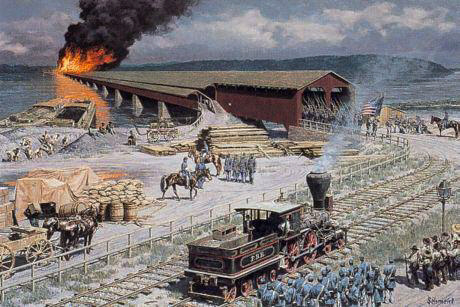ACVitale
Service Attendant
http://www.mysanantonio.com/news/local_news/article/Train-from-S-A-halted-by-wildfire-1331106.php
According to San Antonio news sources passengers headed from SAS to LAX were stuck on the Sunset Limited from around 5:40am on Saturday until Sunday morning. According to the above article the train was stuck due to a wildfire burning a UP bridge that needed to be repaired following the fire before the train could proceed. The crew also went illegal and needed to be replaced.
The article stated that passengers were irritated and irate and that it was an ugly scene.
I am going to assume that the wildfires/brushfires in addition to the damage done to local housing and in some cases with news reports describing towns looking like bombed out scenes from Bagdad left local emergency services for miles scrambling.
The article claims passengers on the train could see the wildfires from the windows.
How safe a situation for the train passengers?
Would it have made sense to have delayed the train at a stop prior to the wildfire area?
Is there anyway to know in advance?
Earlier this year (March), I was on the Carolinian when we had to stop for about 90 mins. due to a brush fire in Northern NC between Rocky Mount and Selma that shut down the CSX mainline. There was a fair amount of concern about the fire onboard and the sooty smokey smell was a little overwhelming.
Any thoughts? Comments? Insight? into the situation?
According to San Antonio news sources passengers headed from SAS to LAX were stuck on the Sunset Limited from around 5:40am on Saturday until Sunday morning. According to the above article the train was stuck due to a wildfire burning a UP bridge that needed to be repaired following the fire before the train could proceed. The crew also went illegal and needed to be replaced.
The article stated that passengers were irritated and irate and that it was an ugly scene.
I am going to assume that the wildfires/brushfires in addition to the damage done to local housing and in some cases with news reports describing towns looking like bombed out scenes from Bagdad left local emergency services for miles scrambling.
The article claims passengers on the train could see the wildfires from the windows.
How safe a situation for the train passengers?
Would it have made sense to have delayed the train at a stop prior to the wildfire area?
Is there anyway to know in advance?
Earlier this year (March), I was on the Carolinian when we had to stop for about 90 mins. due to a brush fire in Northern NC between Rocky Mount and Selma that shut down the CSX mainline. There was a fair amount of concern about the fire onboard and the sooty smokey smell was a little overwhelming.
Any thoughts? Comments? Insight? into the situation?








